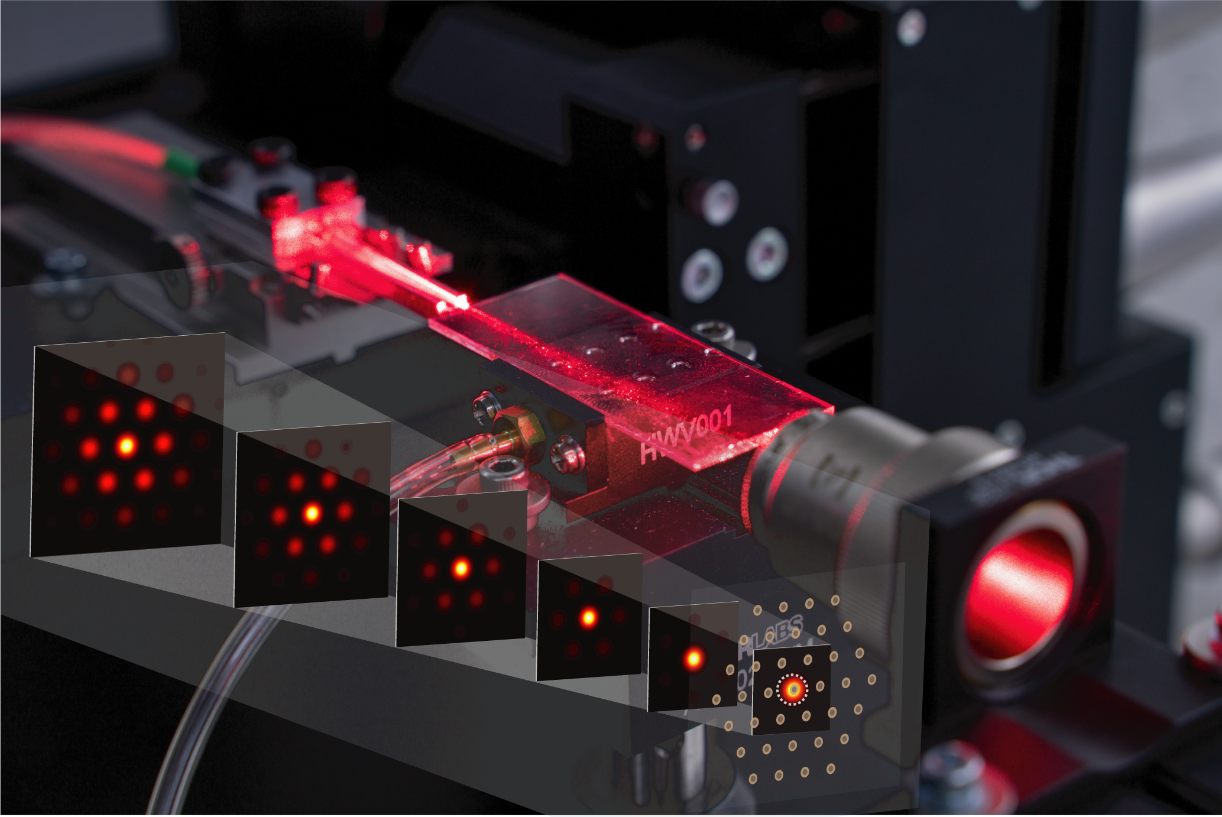
Recently, the authoritative international optics journal Optica published the latest research results of Xianmin Jin's team at the School of Physics and Astronomy of Shanghai Jiaotong University under the title of "Two-dimensional quantum walks of correlated photons". They experimentally realized a multi-photon quantum walks and the scalable solution promotes the development of quantum simulation and quantum computing based on quantum walks. Optica is a top journal under the Optical Society of America (OSA).
Random walk, as a statistical mathematical model, describes a series of random trails experienced by a particle after starting from the starting point. One of the typical examples is Brownian motion. Usually random walk can be applied to the fields of computer, finance, physics and so on. For example, you can plan the best path, simulate stock or price fluctuations, simulate the movement of gas molecules, etc.

Figure.1 Article cover picture
There are many early experiments demonstrating quantum walks, most of which were based on single particle, including the use of trapped ions, nuclear magnetic resonance, photons, atoms, and so on.
The overall development trend of the quantum walks is shown in Figure.2(a). One way is to increase the number of particles. British scientists used a photonic chip to publish a paper in Science in 2010 (Science 329, 1500, 2010) for the first time to realize the quantum walks of two correlated photons in a one-dimensional lattice. The other way is to increase the spatial dimension of photon evolution. Quantum walks can be mapped to a specific graph (Graph). Based on this graph, it can help us to solve the problems encountered in practice, such as the search problem. However, in reality, the photon walking graph is not complex enough, and the dimension is not high enough, so there is no suitable platform for demonstrating the algorithm. Figure.2(b)-(f) gradually shows the complexity evolution of the graph constructed in the experiment.

Figure.2 Demonstration of the complexity of the graph in the experiment
The team started relevant research since the end of 2014, and the technical route locked the femtosecond laser direct writing technology. Compared with lithography, femtosecond laser direct writing technology has the ability of three-dimensional processing, just like holding a precise "photoetching knife" in the complex waveguide circuit structure inside the chip substrate. In 2018, the research team first published an article in Science Advances (Sci. Adv. 4, eaat3174 2018), which demonstrated the quantum walks of a single particle in a large-scale two-dimensional lattice and now they push it into the category of multiple particles.

Figure.3 Two-dimensional quantum walks of correlated photons based on photonic chip
The quantum walks between multiple particles needs to be measured by quantum correlation, which means that the researchers need to accurately import the evolution results into the detector, and then use a large-scale coincidence measurement device to perform the coincidence measurement as Figure.3 shows. The researchers designed a new two-dimensional fan-out structure to maximize the protection of the evolutionary results and realize the direct connection between points to points, which makes large-scale synchronous coincidence measurement possible.
In the experiment, the researchers injected the pair of correlated photons into the photonic chip at the same time, collected the quantum correlation data of the photons at the interference point, and verified the non-classical correlation to determine the dimensional gain brought by the quantum interference.
This experiment provides new ideas for researchers to use photonic chips to simulate complex physical phenomena. Of course, this is still a long way from solving quantum search problems or general quantum computers. The realization of quantum simulation or quantum computing requires the wisdom and joint efforts of researchers from all over the world.
The research team thanks the Science and Technology Commission of Shanghai Municipality and the National Natural Science Foundation of China for the strong support, as well as thanks the National Key Research and Development program and the Shanghai Municipal Education Commission for the strong support. Doctoral students Zhi-Qiang Jiao and Jun Gao of the Integrated Quantum Information Technology Research Center, School of Physics and Astronomy, Shanghai Jiaotong University, are the co-first authors of the paper, and Professor Xian-Min Jin is the corresponding author of the paper.
Link to the paper: https://doi.org/10.1364/OPTICA.425879




